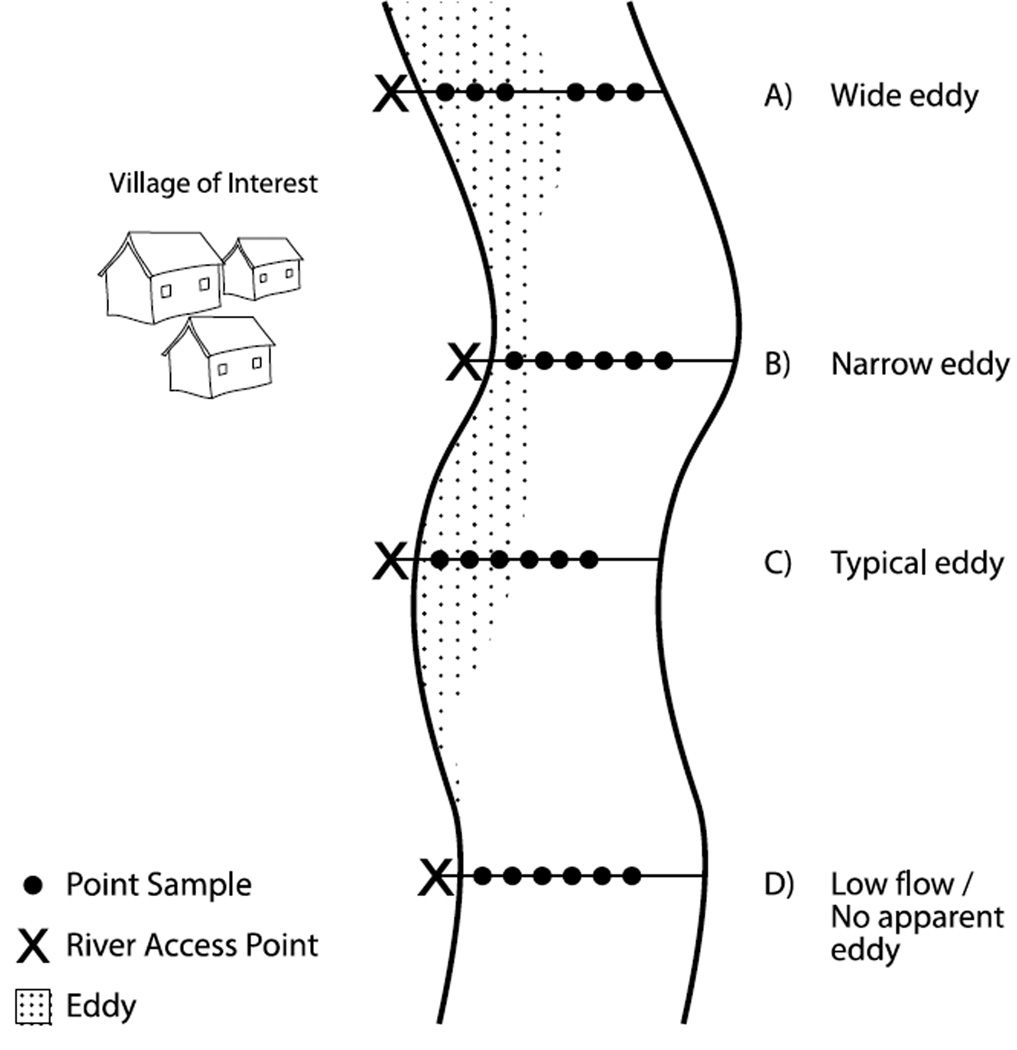Figure 1.
Field sampling schematic. At each village of interest, we sampled at sites along the banks of the river where the population accesses the river. We established river transects perpendicular to the river bank and took samples 2 m apart either within or outside of the eddy. Four different situations occurred, depending on the geometry of the river: (A) Wide eddy: when the eddy was >6 m wide, we took three samples within the eddy (each collected 2 m apart) and three samples outside of the eddy (each collected 2 m apart), with a gap between the third and fourth sample; (B) Narrow eddy: If the eddy was <6 m wide, we took as many samples as possible from within the eddy and the remainder outside of the eddy, with all samples collected 2 m apart; (C) Typical eddy: If the eddy was 6 m, we took three samples from within and three samples outside of the eddy, with all samples collected 2 m apart; (D) No apparent eddy: If there was no apparent eddy due to low flow, all samples were collected 2 m apart.

